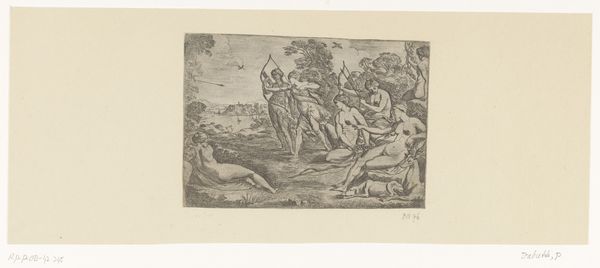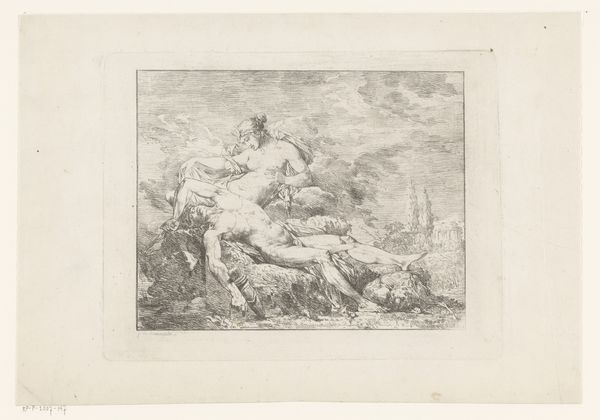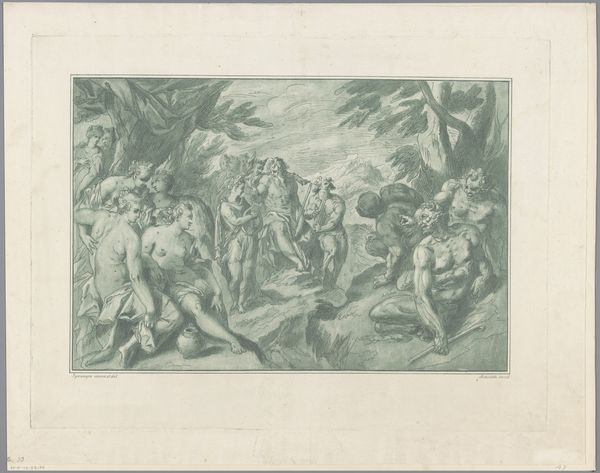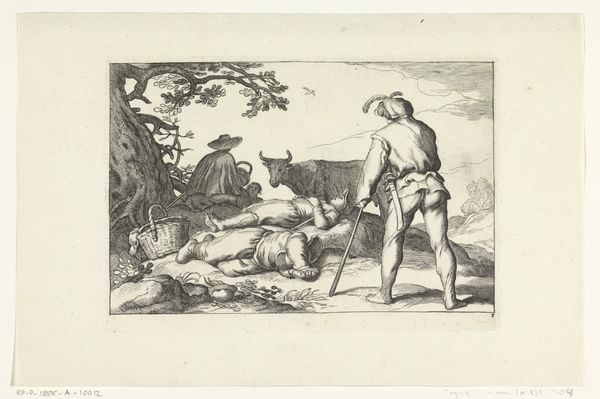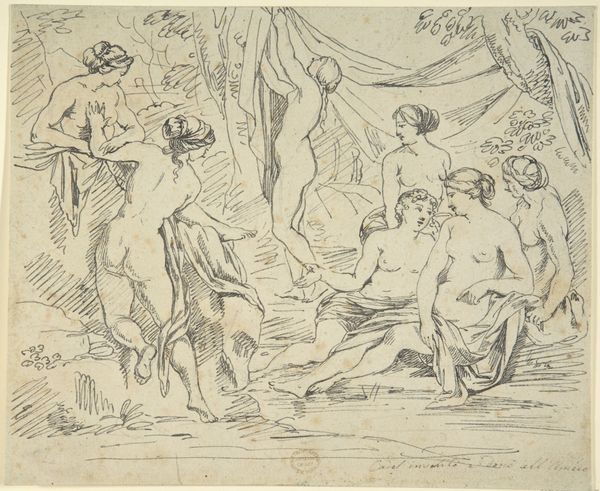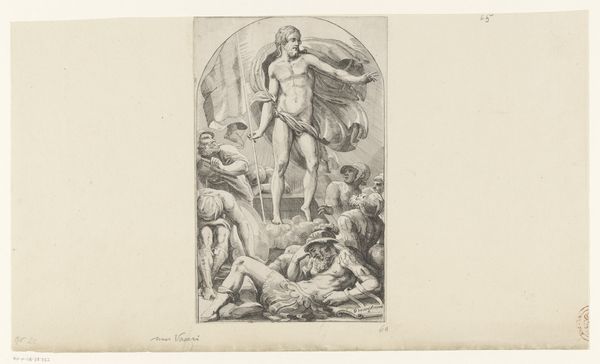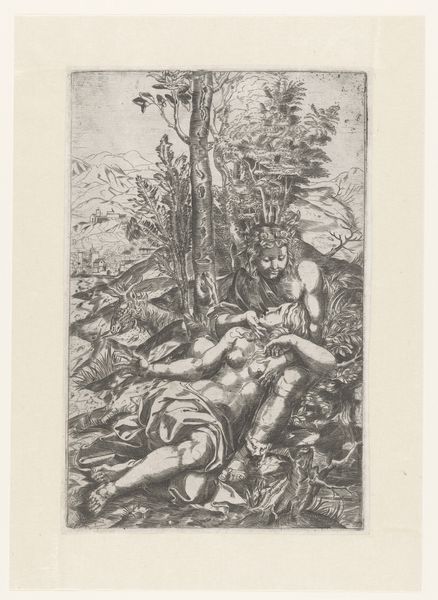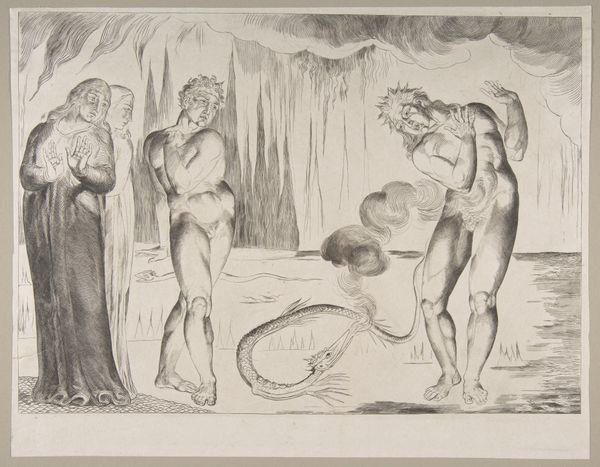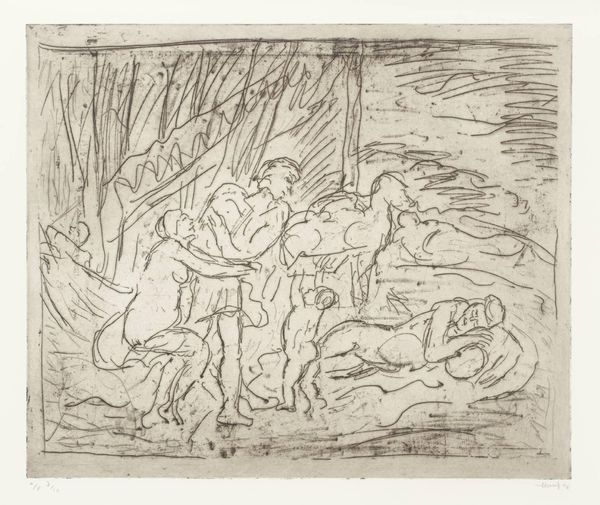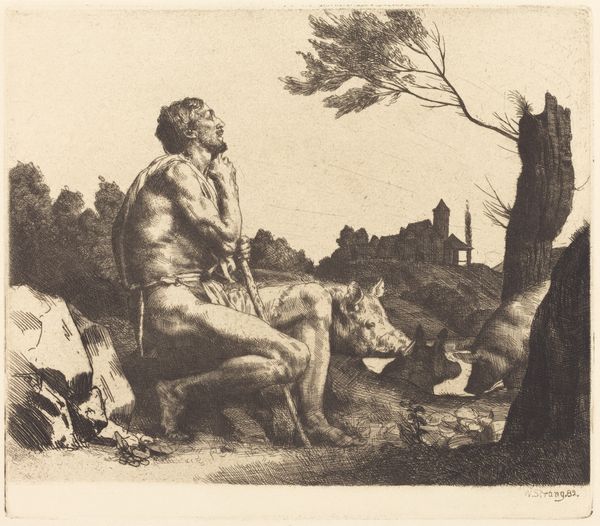
Dimensions: 16 3/16 x 20 1/8 in. (41.12 x 51.12 cm) (image, sheet)
Copyright: Public Domain
Editor: Here we have Paul Cézanne’s “The Bathers (Large Plate),” a lithograph dating from around 1896-1897. The scene feels both classical and somewhat unfinished, doesn't it? What's your perspective on it? Curator: Looking at it from a materialist point of view, I'm immediately drawn to the lithographic process itself. Think about the labor involved in creating this image, the grinding of stones, the application of ink, the pressure of the press. These elements bring a new perspective to Cézanne's famous bathing scenes. Editor: That’s fascinating, I hadn’t considered that! I was stuck on its Impressionist roots. How does the medium challenge the traditional hierarchy between art and craft? Curator: The reproductive nature of printmaking complicates our understanding of originality and value. It becomes less about the artist's unique touch, and more about the accessibility and distribution of the image. And beyond that, what might this scene depict in reality? Is it leisure, manual labor, the production of images and self in general? What does the context of turn-of-the-century French society say? Editor: That makes me wonder about the role of the art market, and the commodification of these images... I mean, were these prints intended for a wealthy clientele or a broader audience? Curator: Exactly! Think about the relationship between production, consumption, and the construction of artistic value at the time. Did the subject itself and the production process carry specific weight in terms of its monetary value? Was it just an image or also something symbolic of labour practices and material value for the bourgeoisie? Editor: Wow, I hadn’t really thought about all those layers of meaning and value inherent in the artwork. This has completely shifted my perception of it. Curator: Precisely, art isn't made in a vacuum, so analysing materials, labor, consumption will deepen one's understanding of its complexity and legacy.
Comments
No comments
Be the first to comment and join the conversation on the ultimate creative platform.


